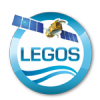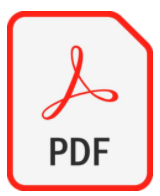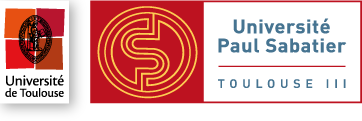Internal tides characterization off the Amazon Shelf break (brazil) in the context of the AMAZOMIX project
Encadrants:
- Ariane Koch-Larrouy (CR IRD LEGOS/Mercator/UFPE)
ariane.koch-larrouyNO SPAM -- FILTER@NO SPAM -- FILTERlegos.obs-mip.fr - Loren Carrère (Ing. CLS), Carina De Macedo (CDD LOG/LEGOS)
groupecls.comNO SPAM -- FILTER@NO SPAM -- FILTERloren.carrere - Michel Tchilibou (post-doctorant LEGOS)
Collaboration avec Fernand Assene (doctorant LEGOS/Mercator) et J. da Silva (Univ Porto)
Sujet du stage
The shelf area facing the mouth of the Amazon are a key region of the global oceanic and climatic system and are subject to different forcings. They are located in the warm water band of the Tropical Atlantic Ocean which feeds a significant atmospheric convection, which constitutes the intertropical convergence zone (ZCIT). Inputs from the Amazon, whose plume extends to the Guyanese plateau and beyond, influence hydrology, nutrients and sediments throughout the region. In addition, a complex and highly variable oceanic dynamic formed by the Northern Current of Brazil (NBC), the retroflexion and the Northern Equatorial Counter-Current (NECC) is also present (Figure 1, blue arrows). Indeed, the instabilities of this current system generate eddies that then migrate to the Caribbean or south to be reintegrated into the NBC (Figure 1, green arrows). Finally, on the plateau and on the Amazonian slope, intense internal waves are generated from the interaction of the tide with the topography that produce an important vertical mixture: this is the original point of our study. The tide would also play an important role in the formation of an upwelling cell off the mouth of the Amazon (between points A and D in Figure 1) (Neto et al. 2014, Araujo et al. 2016), but this hypothesis remains to be verified.
All these physical processes (plumes, coastal currents, mesoscale, tides, internal waves, upwelling) have an impact (ex: upwelling in the zones of upwelling, mixing and vertical displacement by the internal waves) on the nutrients, on the suspended matter (such as chlorophyll, Muacho et al. 2014, Pan et al. 2012, Wang et al. 2007), and on salt and heat balances, variables that condition the entire ecosystem, from plankton to fish. Although many campaigns have already studied currents, their variability, Amazon inputs or plume variability, there is no in-situ study to characterize upwelling, internal waves, induced mixing and their impact on the marine environment and ecosystem.
This was the main objective of the AMAZOMIX campaign which took place in September/October 2021.
Magalhaes et al. 2016 have shown that ISW change their direction of propagation depending of the season, and the authors have attributed these changes to the intensity of the NBC (see figure 2).
Recent work by Tchilibou et al. (2021) has shown that baroclinic flux have different direction and intensity depending on the season, using NEMO at 1/36 ° model. Recent work done by Fernand Assene in PhD at LEGOS and Mercator-Ocean have extended the region modelled to cover both A and B propagations.









